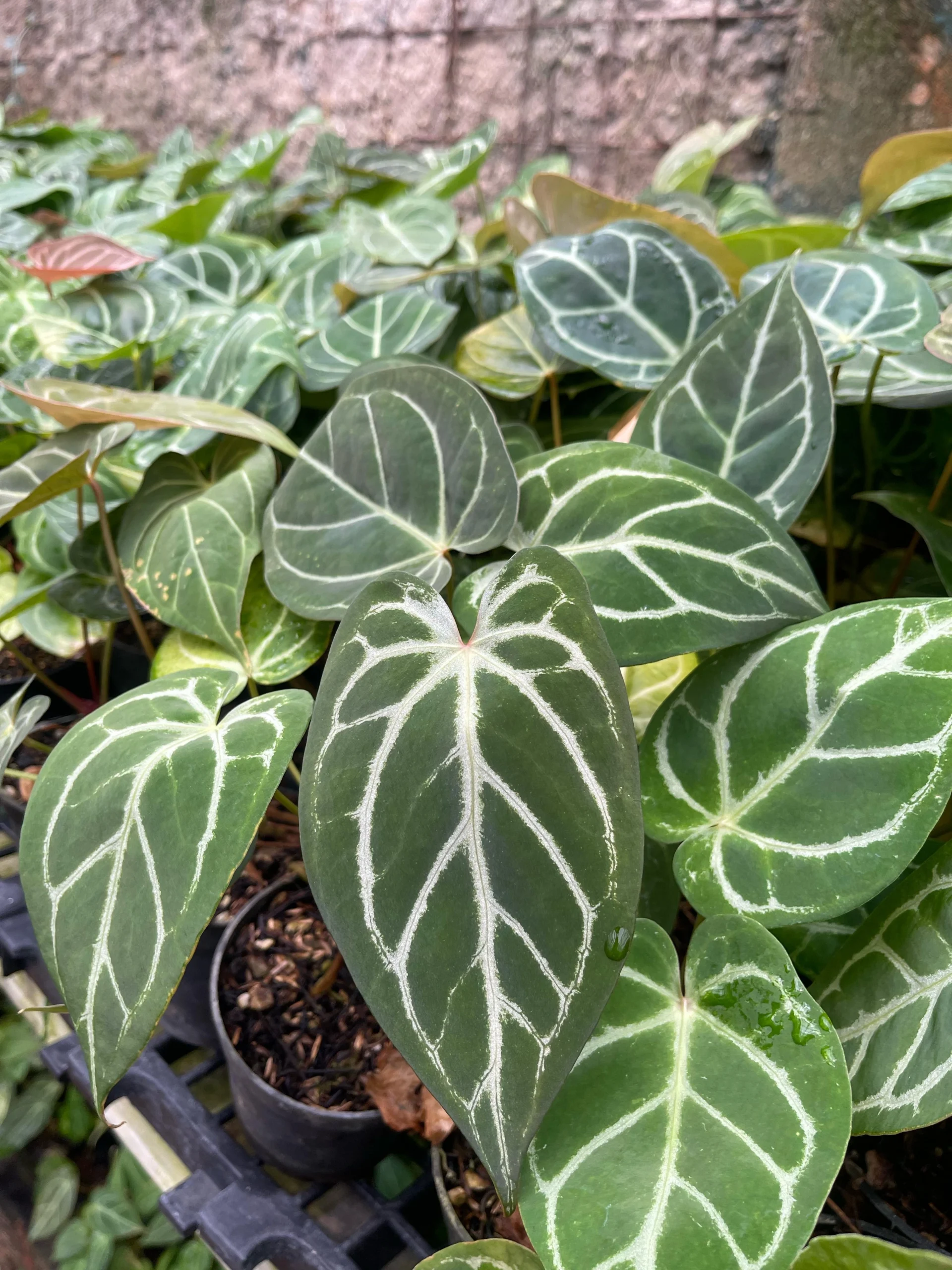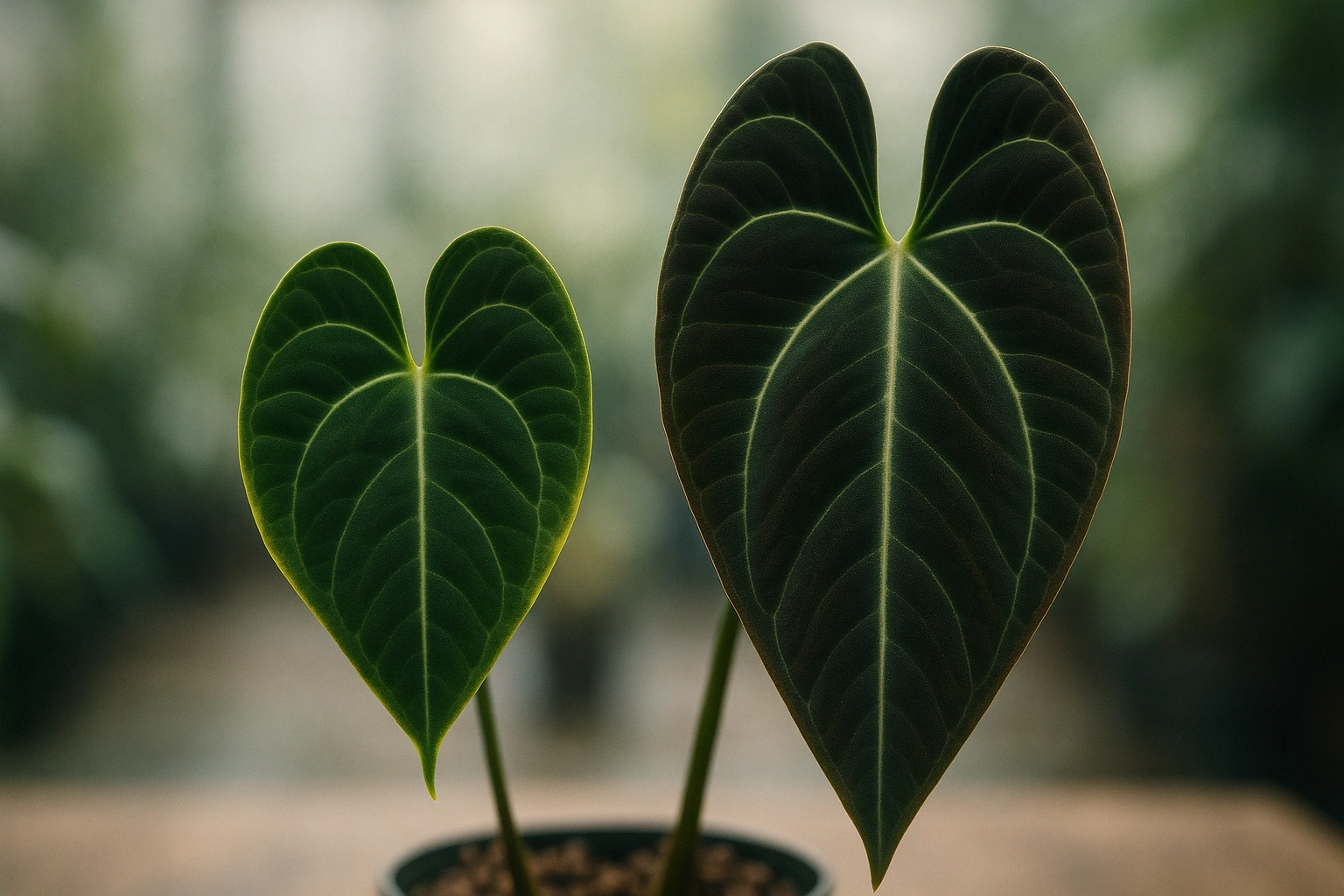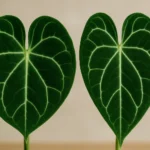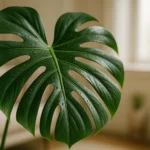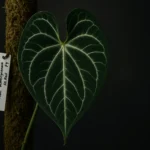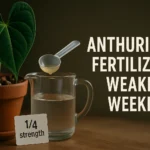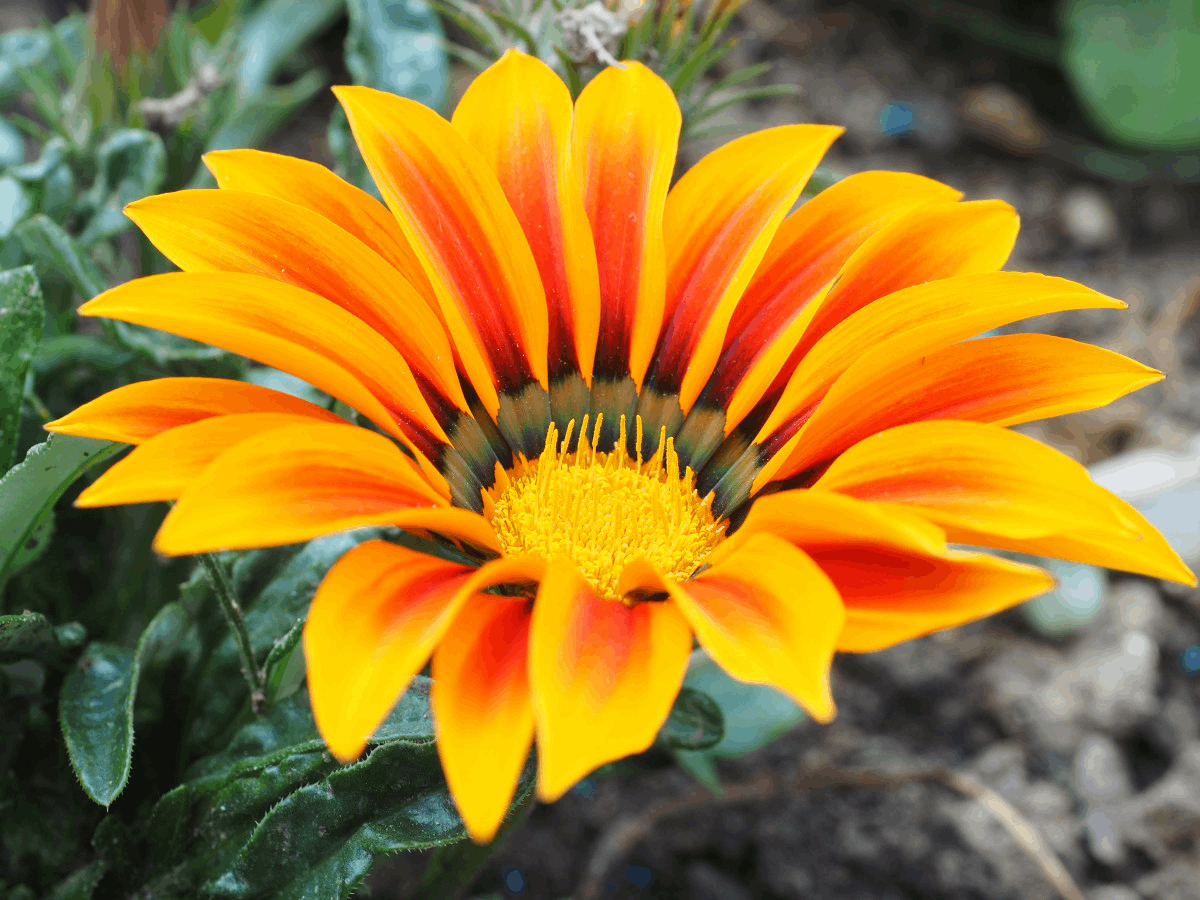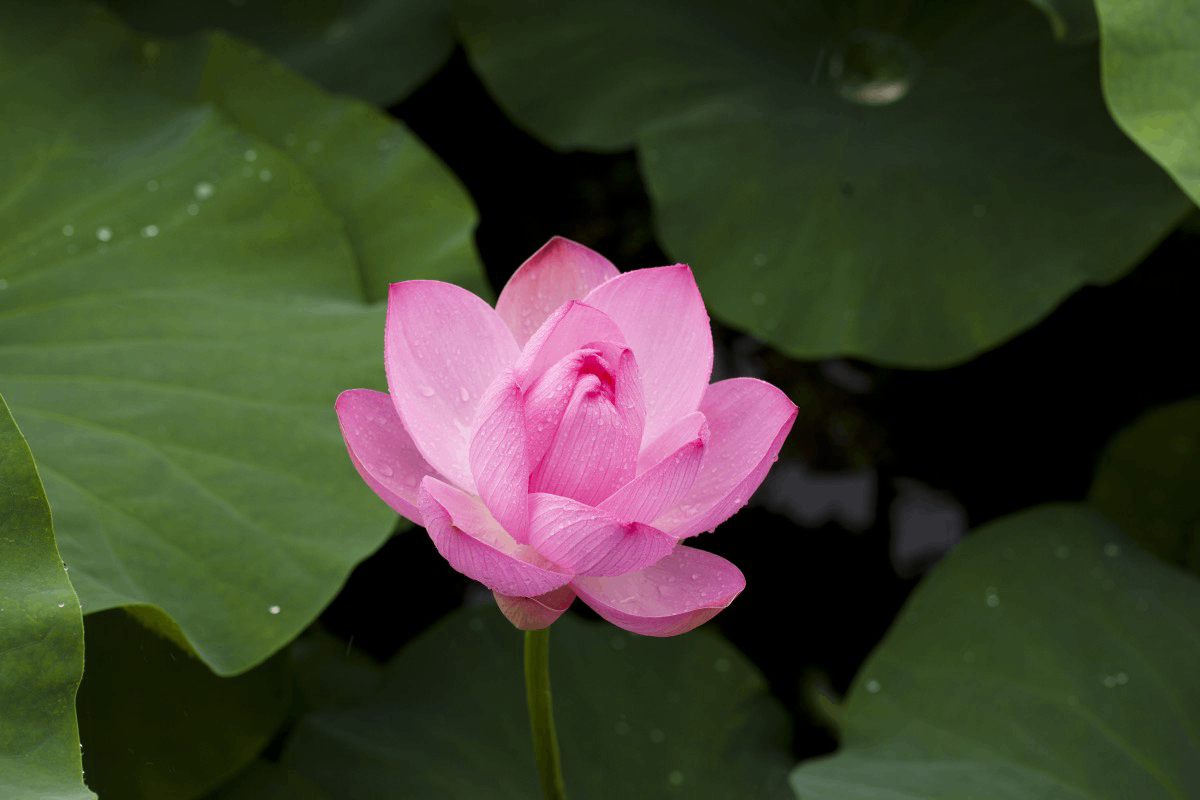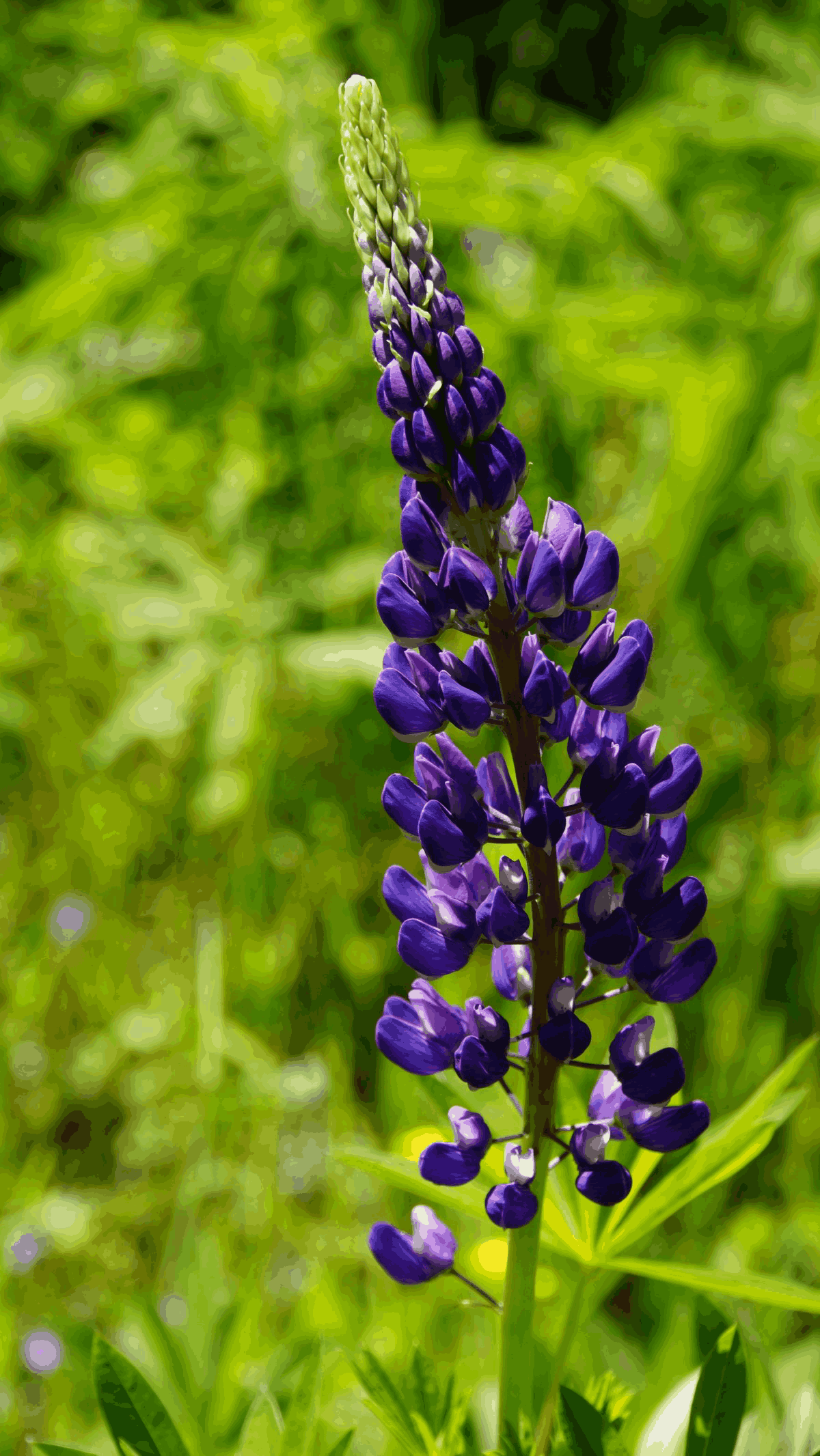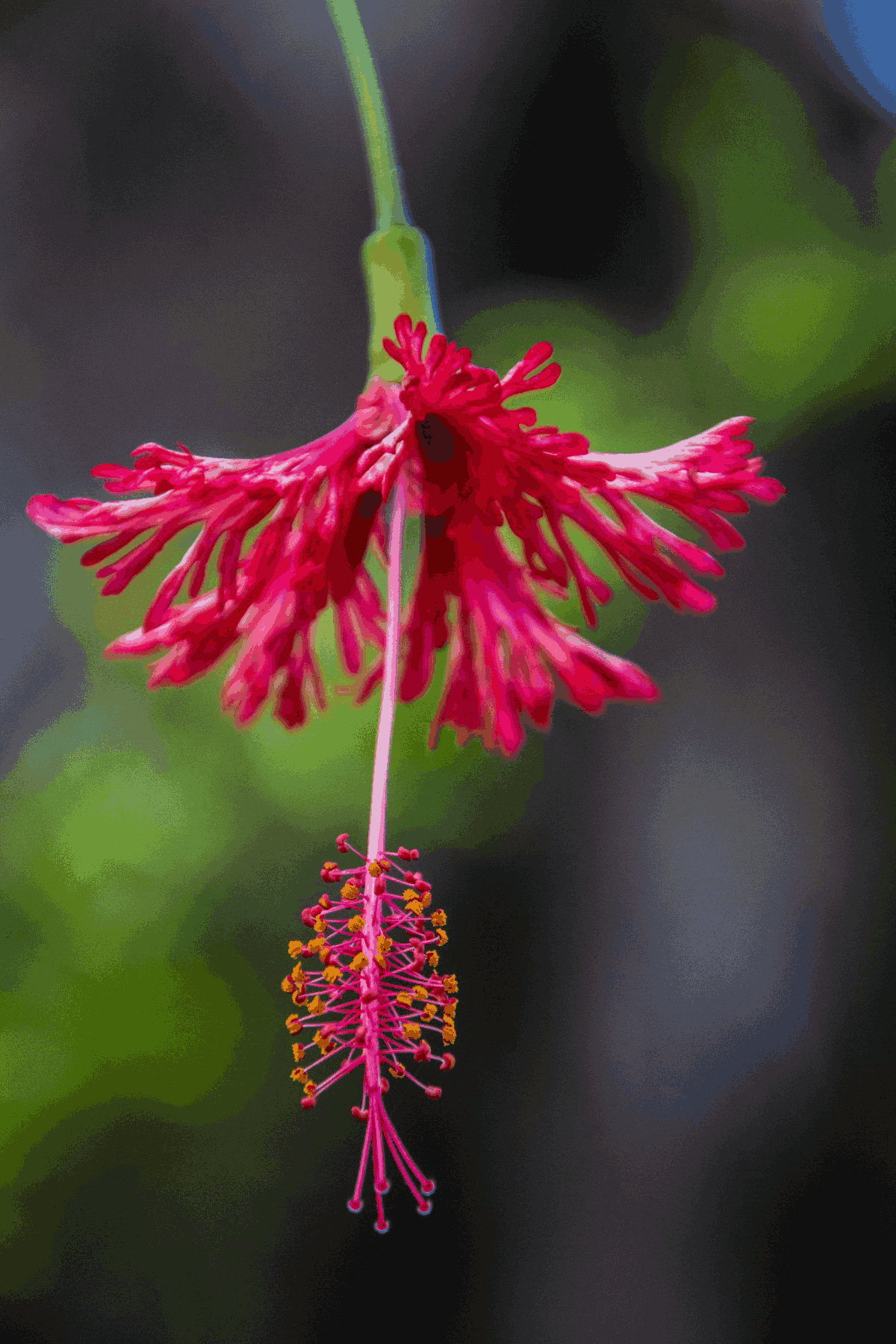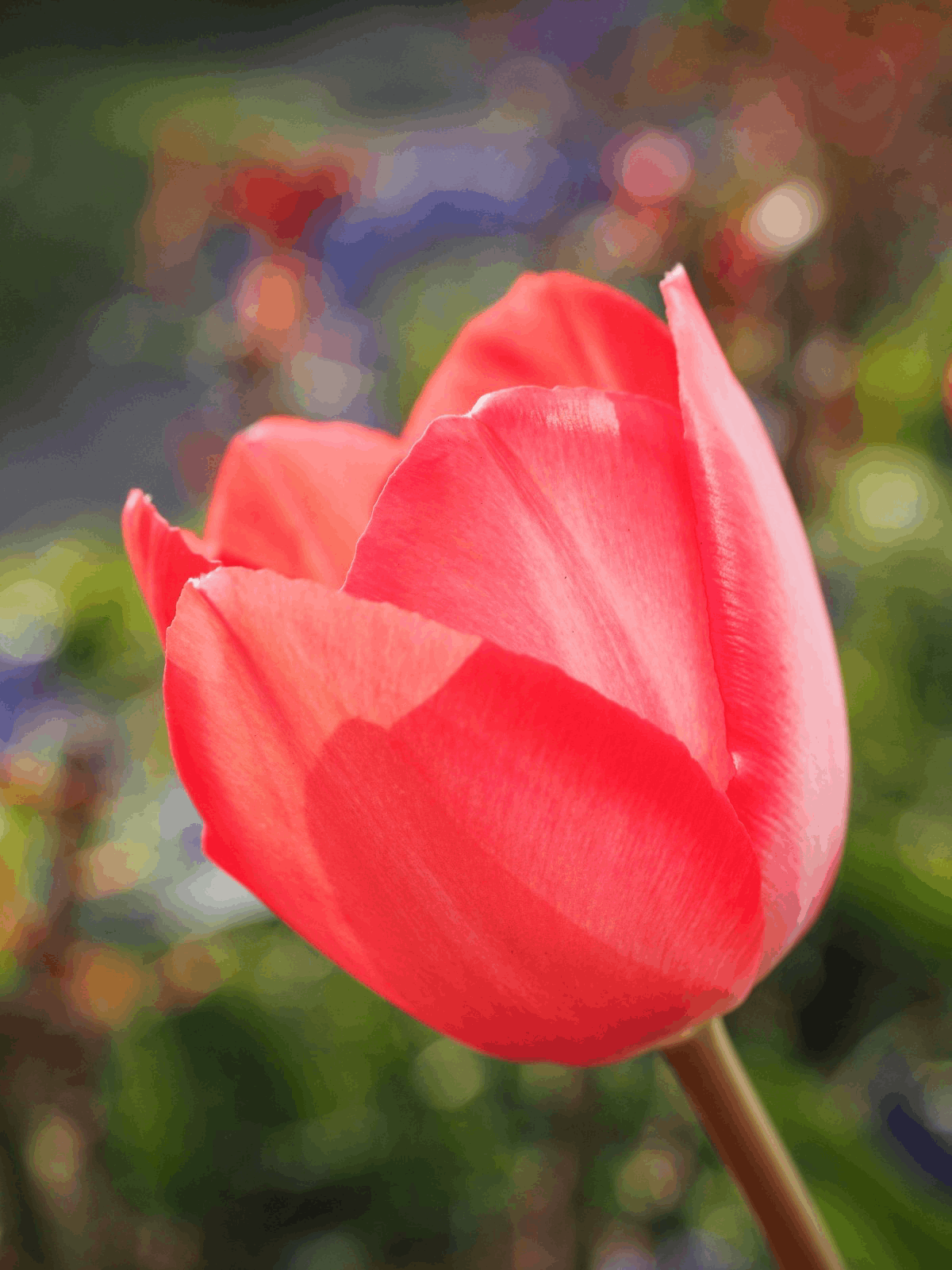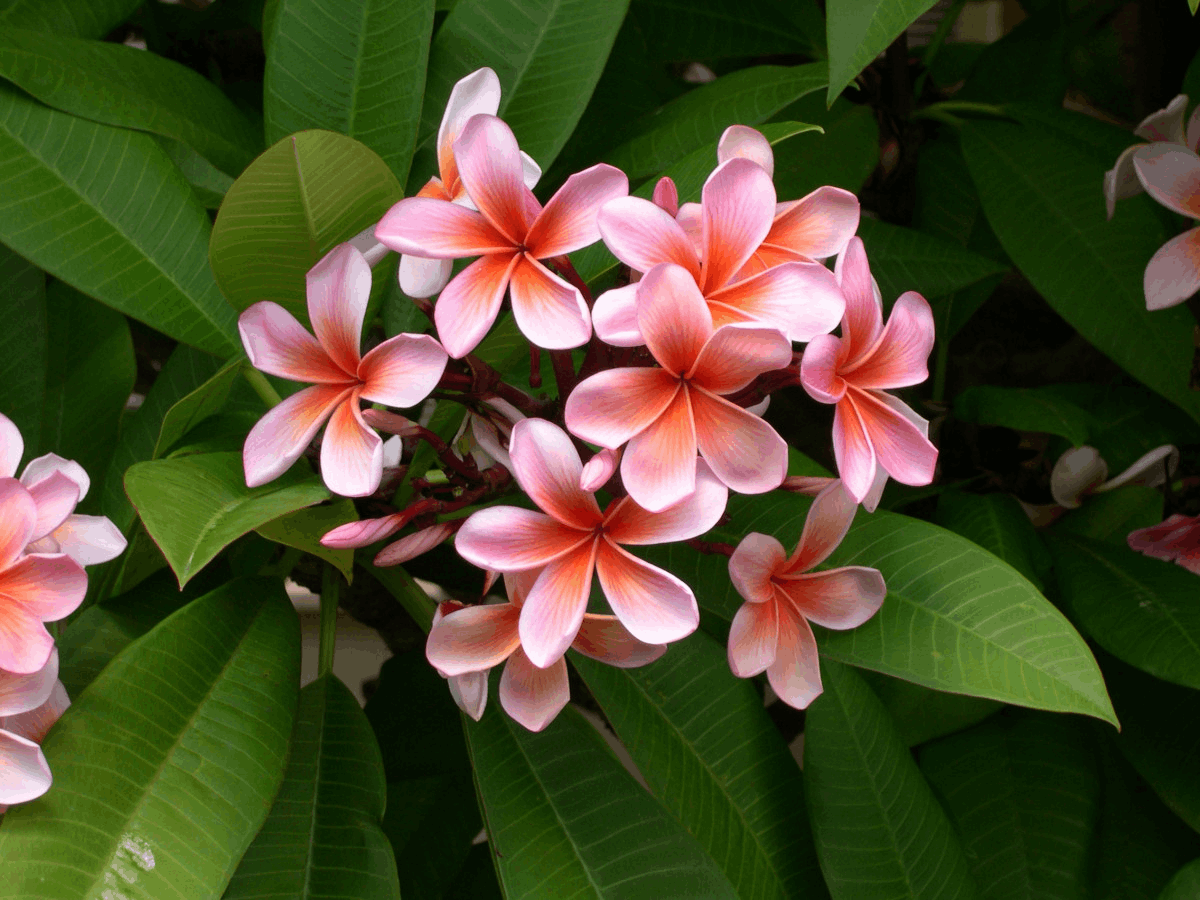GreenWandering
Discover the world’s most unique leaves.
The Shape-Shifting Marvel of the Aroid World
You acquire a stunning, perfectly heart-shaped plant with deep, bullate, velvety leaves. You nurture it for a year, maybe two, and then something strange happens. A new leaf emerges that looks… different. It’s longer, the top lobes are more pronounced, and the perfect heart shape is gone. For new collectors, this can be alarming, a sign that they’ve done something wrong. But for connoisseurs of **Anthurium dressleri**, this transformation is the entire point. It’s a plant that tells a story of time and maturity through its dramatic change in form.
This slow-growing, demanding, and utterly captivating species is a true collector’s prize, but its rewards come with challenges. This guide will walk you through everything you need to know about this living jewel. We will explore the fascinating shift from its **juvenile vs mature** forms, provide a detailed care regimen tailored to its sensitive nature, and offer a buying guide to ensure you start with a healthy specimen. At GreenWandering, we believe that understanding a plant’s unique journey is the key to cultivating it successfully.
What Is an Anthurium Dressleri?
An **Anthurium dressleri** is a species of terrestrial aroid native to the Colón Province of Panama. Unlike many of its climbing cousins, it grows on the forest floor, often in challenging soil conditions. This habitat informs its care needs entirely. Taxonomically, it sits within the massive Anthurium genus, a group you can explore the vastness of on resources like the Kew’s Plants of the World Online. In the collector community of 2025, it is revered for its intensely dark, **velvety foliage** and the remarkable morphological changes it undergoes with age, making it one of the most sought-after **rare aroids**.
Key Visual Traits: A Tale of Two Forms
Form Changes: Juvenile vs. Mature
The most defining characteristic of this species is its dramatic shift in leaf shape.
Juvenile Form: Young plants exhibit a sub-orbicular to cordate (heart) shape. The sinus—the gap where the petiole attaches to the leaf—is typically closed, with the posterior lobes overlapping. The leaves are often highly bullate (quilted or bubbly) and have a classic, rounded appearance. This is the form most commonly seen for sale.
Mature Form: As the plant ages and reaches sexual maturity, the leaf shape elongates into a more triangular or shield-like form. The most significant change is the sinus, which opens up dramatically, becoming bare and prominent. The posterior lobes sweep backwards, creating a much more architectural and open look. The bullation may soften slightly as the leaf size increases.
Color and Texture
The allure of A. dressleri lies in its sensual texture and deep color. The leaves have an exceptionally velvety adaxial (top) surface that can appear almost black in certain lighting. New leaves often emerge in stunning shades of deep red, bronze, or purple and are incredibly delicate. They take several weeks to “harden off” and achieve their final deep green-black coloration. This process is a spectacle in itself.
Growth Habit
This is a terrestrial anthurium with a compact, clumping growth habit. It does not vine or climb. The petioles are often D-shaped or subterete (almost cylindrical with a flat side), providing sturdy support for the heavy leaves. Its slow and steady nature means it won’t outgrow its space quickly, making it suitable for dedicated collectors with limited room.
Care Basics: Nurturing a Sensitive Species
Anthurium dressleri is not a beginner’s plant. It demands specific conditions and is unforgiving of neglect, especially regarding watering. Success lies in mimicking its natural habitat.
- Light: Prefers low to medium bright, indirect light. It is highly sensitive to direct sun, which will scorch its dark leaves.
- Watering: This is the most critical factor. It is extremely prone to root rot. Allow the substrate to dry out significantly between waterings.
- Humidity: Requires high humidity, ideally 70%+. However, this must be paired with good airflow.
- Temperature: Prefers stable, warm temperatures between 65-80°F (18-27°C). Avoid cold drafts.
- Airflow: Essential for preventing fungal issues on its velvety leaves and for root health.
Soil & Potting Mix
Standard aroid mixes are often too dense. An A. dressleri mix needs to be exceptionally airy and fast-draining. A good recipe is a soilless mix of orchid bark, coarse perlite or pumice, tree fern fiber, and a small amount of sphagnum moss or coco coir. The goal is a substrate that is barely moist after watering, allowing the roots constant access to oxygen.
Watering Rhythm & Cues
Do not water on a schedule. The “finger test” is not enough. Use a moisture meter or the weight of the pot as your guide. The pot should feel noticeably lighter before you consider watering. When you do water, do so thoroughly, allowing it to flush through the pot, then let it drain completely. Never let it sit in a saucer of water. When in doubt, wait another day.
Buying Guide: Choosing a Healthy Dressleri
- Prioritize Roots Over Leaves: A small plant with a robust, visible root system is a much better investment than a large plant with questionable roots. Ask the seller for root pictures if possible.
- Check the Base: Gently feel the base of the plant where the petioles emerge. It must be absolutely firm. Any softness is a sign of impending rot.
- Look for Active Growth: Even a tiny emerging leaf spear is a fantastic sign that the plant is healthy and not just stagnant.
- Be Wary of Imports: Freshly imported dressleri are incredibly stressed and have a high failure rate. Buying an established plant from a local grower is always safer.
Comparison: Dressleri vs. Other Velvety Anthuriums
| Plant | Leaf Shape | Sinus | Growth Rate | Difficulty |
|---|---|---|---|---|
| A. dressleri | Heart-shaped, becomes triangular/elongated | Closed when young, opens wide when mature | Very Slow | Expert |
| A. crystallinum | Large, heart-shaped | Open, but not as dramatic as mature dressleri | Moderate | Intermediate |
| A. magnificum | Very large, heart-shaped with squared petioles | Open | Moderate-Fast | Intermediate |
Common Mistakes to Avoid
- Overwatering: The number one killer. Its roots cannot tolerate being constantly wet.
- Using Dense Soil: Potting it in standard “houseplant soil” is a recipe for disaster.
- Low Airflow: Stagnant, humid air can lead to fungal spots on the leaves and contribute to root rot.
- Impatience: Getting discouraged by its slow growth and trying to “fix” it with too much fertilizer or water.
- Poor Acclimation: Repotting or fertilizing it immediately after it arrives from shipping.
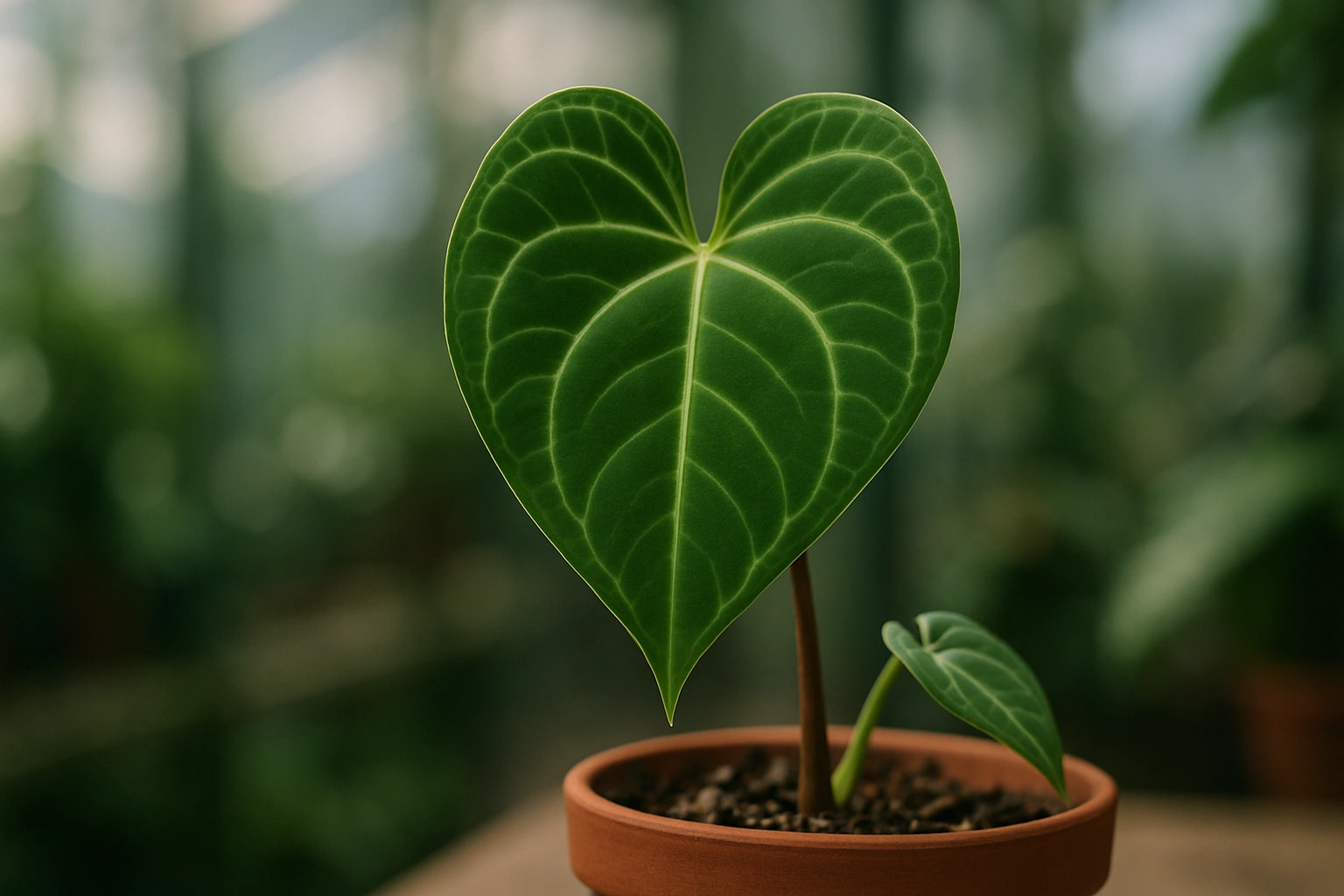
Frequently Asked Questions (FAQ)
Why is my Anthurium dressleri growing so slowly?
Anthurium dressleri is a notoriously slow-growing species. This is completely normal. Its energy is focused on developing a strong root system before producing new leaves. Be patient; it’s a marathon, not a sprint. Providing optimal, stable conditions is the best way to encourage steady growth.
Are Anthurium dressleri prone to root rot?
Yes, they are highly susceptible to root rot if overwatered or kept in dense, poorly aerated soil. Their roots require exceptional airflow. It is crucial to let the potting mix dry out significantly between waterings and to use an extremely chunky, well-draining substrate.
How can I tell if my dressleri is a juvenile or mature form?
A key indicator is the sinus (the gap where the petiole meets the leaf). Juvenile plants typically have a closed or overlapping sinus, creating a classic heart shape. As the plant matures, the sinus opens up, and the leaf shape becomes more elongated and shield-like.
Why are the new leaves on my dressleri so pale and soft?
New leaves on many dark, velvety anthuriums emerge in a lighter shade, often reddish or bronze, and are very delicate. This is normal. They will gradually ‘harden off,’ deepening in color and firming up over several weeks. Avoid touching them during this sensitive period.
Can Anthurium dressleri be grown in lower light?
Yes, compared to many other aroids, A. dressleri prefers lower light levels. Bright, indirect light is still ideal, but it can scorch easily in direct sun and tolerates medium to low-light conditions better than most, although growth may be even slower.
Conclusion: The Reward of Patience
